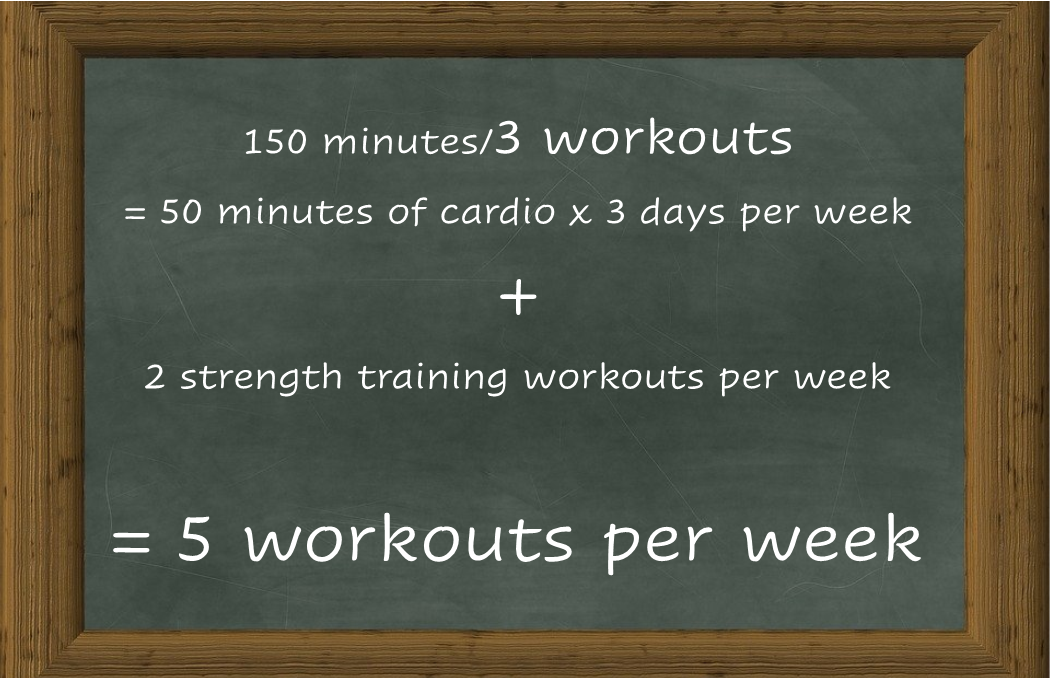 Wow! My IG feed has blown up with stories and posts of people working out. Everyone has EXPLODED with ALL the options, ideas, and what they are doing. It’s A LOT and I’m super proud that people are moving. Who’s been tagged with the Push Up Challenge? How ‘bout the Squat Your Partner Challenge? On the other hand, along with ALL the new processes we’re crash-course learning right now, figuring out what to do for your workout doesn’t need to be one of them. Are you feeling like….
Wow! My IG feed has blown up with stories and posts of people working out. Everyone has EXPLODED with ALL the options, ideas, and what they are doing. It’s A LOT and I’m super proud that people are moving. Who’s been tagged with the Push Up Challenge? How ‘bout the Squat Your Partner Challenge? On the other hand, along with ALL the new processes we’re crash-course learning right now, figuring out what to do for your workout doesn’t need to be one of them. Are you feeling like….
…..SYSTEM OVERLOAD…..
Exercise Science 101: The 5 Components of Fitness
Need even less, scroll down to develop your fitness formula.
- Muscular strength - the ability of muscles to produce force. Improve strength by lifting heavy things.
- Muscular endurance - the ability of muscles to sustain force over time. To improve muscular endurance, repeat muscle contractions over time.
- Cardiovascular capacity - the ability of the cardio-respiratory system (heart, blood vessels, lungs) to supply muscles with nutrients and oxygen. Activities that increase your heart rate train cardiovascular capacity.
- Flexibility - the ability for joints to move through their full range of motion. Flexibility is trained by moving joints through available range of motion through strength training, fluid movements like yoga, and stretching.
- Body composition – the measurement of how much lean and fat mass in the body. Body composition is changed by the altering 4 components above, stress management, hormonal balance, quality sleep, and nutrition that supports your goals.
How much of each depends on your goals, however, ALL 5 components are important to maintain health and wellness.
Your goals simply change the coefficient of your fitness formula. For example:
- Endurance based goals like completing a marathon, keeping up with your kids or grandkids, being able to walk up the stairs without losing your breath, or preparing for a hike up Mount Kilimanjaro require more muscular endurance and cardiovascular training.
- Strength based goals like being able to do a pull up, carry a baby carrier and baby postpartum, squat your partner, carry your groceries in 1 trip from your car often mean more strength training.
- Flexibility based goals like being able to comfortably sit on the floor, tie your shoes, reach the top shelf in your kitchen, reduce tight-hamstring-induced-back-pain, or improve your state of chronic desk sitting posture require a little more flexibility training.
- Stress management and wellness based fitness goals require you to figure out which of the 5 components of fitness do indeed reduce your stress or change the component of health you’re aiming to change (like reducing your risk for diabetes) and increase the frequency and/or duration of those workouts.
- Appearance based goals depend on what appearance you’re going for AND your genes. A muscular physique requires more muscle-building exercise and often, less cardio and may be more or less accessible via training and nutrition depending on your body type. A “toned” physique is generally a balance of all 5, but again, really depends on your body type. A lean physique is often found from high cardio, low muscle-building exercise, but, again, it really depends on body type. It’s very important to note that while we cannot change our genes or body type, we can change is how we exercise and what we eat. Good news! Regardless of what appearance-based goal you have in mind, regular exercise builds confidence, body appreciation, and improved body image.
How to create your personal fitness formula for the math-minded:
For the word-minded, keep scrolling! This is going to get deep and I’m trying to make it easy for you!
- Determine your fitness goal.
- Determine where your fitness goal fits into the CDC recommendations on exercise:
Key Guidelines for Adults from the CDC's Physical Activity Guidelines for Americans, 2nd Edition
-
Adults should move more and sit less throughout the day. Some physical activity is better than none. Adults who sit less and do any amount of moderate-to-vigorous physical activity gain some health benefits.
-
For substantial health benefits, adults should do at least 150 minutes (2 hours and 30 minutes) to 300 minutes (5 hours) a week of moderate-intensity, or 75 minutes (1 hour and 15 minutes) to 150 minutes (2 hours and 30 minutes) a week of vigorous-intensity aerobic physical activity, or an equivalent combination of moderate- and vigorous-intensity aerobic activity. Preferably, aerobic activity should be spread throughout the week.
-
Additional health benefits are gained by engaging in physical activity beyond the equivalent of 300 minutes (5 hours) of moderate-intensity physical activity a week.
-
Adults should also do muscle-strengthening activities of moderate or greater intensity and that involve all major muscle groups on 2 or more days a week, as these activities provide additional health benefits.
- Add a coefficient of 2-3+ to the component(s) of fitness that work towards your goal. The number of additional workouts or minutes also depends on your current fitness level, availability of time, and ambition.
*flexibility may fall in gentle cardio or strength training depending on the modality
Now, if you have endurance in mind, add 1-2 cardio workouts per week or an additional muscular endurance workout. If you have strength in mind, then increase your strength workouts from 2 to 3 or more.
NOTE: Pay close attention to your recovery needs. Some bodies are recovered after 24 hours, others need more time. As we age, recovery time increases. Therefore, to receive the maximum benefit out of key workouts (those that are directly goal oriented), be sure you’re properly recovered and fueled.
How to create your fitness plan for the word-minded:
| Monday | Tuesday | Wednesday | Thursday | Friday | Saturday | Sunday |
| Cardio + Flexibility | Strength | Cardio + Flexibility | Strength | Cardio + Flexibility | Direct Goal Oriented Workout
|
REST DAY!!! Moderate physical activity still recommended, but nothing you’d label as “exercise”, high impact, or strenuous. |
Here’s a few ideas to find these workouts while the gym is closed:
- Right here on SAS Life! Check out these posts:
- Celebrate Pi Day with this Baked Apple Pi Workout
- Leg Blast in How to get from your desk to the gym and back in an hour
- Porch Workout in Take Your Workout on Vacation
- NEHFM Workouts of the Week
- Roast that Rump Workout in Stay Active During the Holidays
- Start a Walking Program
- 0-Half Marathon Training Plan in Reach the Finish Line this Fall
- Just Lift
- Relax with Yoga this Holiday Season
- SAS employees may also check the RFC’s Daily News Page and RFC Yammer Posts.
- Apps like Peloton, Beach Body, Les Mills, Nike+ and Gold’s Gym.
- YouTube has ALL kinds of free workouts like Cosmic Kids Yoga and TRX Training.
- Social Media – Check out your trainer’s page and sites like IRONMAN and Spartan.
Speaking of personal trainer or coach, if you have one, reach out to them if you need help with this transition! While we can write workouts in our sleep, we fully understand the that sometimes the hardest part of exercise is not the doing the actual workouts – but figuring how and when to get them done. I’m very proud of how creative our Personal Training Team is at SAS and even at home, we're virtually here to help!
WORKOUT FROM HOME CHALLENGE - You're up!


3 Comments
What a great article! Thanks for your wealth of information and how creative you are with your writing.
Thank you, Celeste! Glad you enjoyed reading!
I have gone through the blog post and I must admit it is very informative. I liked the writing style too. Keep up the good work and share more contents. Cheers!